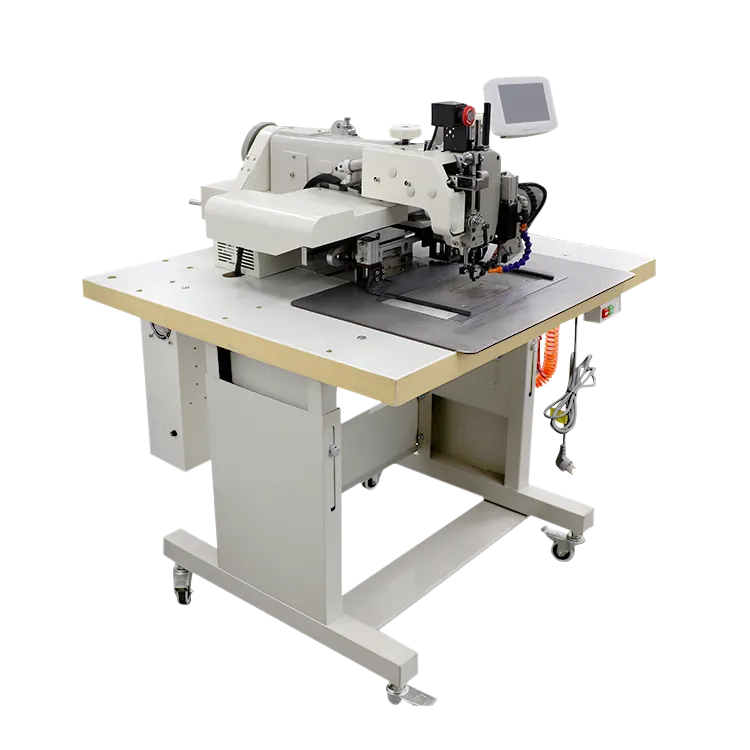what is an overlocking stitch
Understanding Overlocking Stitches
Overlocking stitches are an essential technique in the realm of sewing, particularly known for their efficiency in finishing edge seams and providing a professional look to fabric edges. Whether you're a novice or an experienced seamstress, understanding overlocking stitches can significantly enhance the durability and aesthetic appeal of your sewing projects.
What is Overlocking?
Overlocking refers to a specific type of stitching that is created using an overlock machine, which is designed to trim, sew, and finish the edges of fabric in one pass. This method is particularly valuable for knit and stretch fabrics, as it prevents fraying and provides stretch in the seams. The overlock machine uses multiple threads, typically three to five, which allows for a combination of zigzag and straight stitches, resulting in a strong yet flexible seam.
The Mechanics Behind Overlocking Stitches
An overlock machine operates with the help of loopers and needles. As the fabric moves through the machine, the loopers wrap the threads around the edge of the fabric while the needles create stitches above. This simultaneous action not only prevents the raw edges of the fabric from unraveling but also creates a decorative finish. The beauty of overlocking lies in its versatility; it can be used for a variety of fabrics and stitch types, including rolled hems and flatlock seams.
Advantages of Using Overlocking Stitches
One of the primary benefits of using overlocking stitches is their ability to prevent fraying. Traditional seam finishes, like pinking shears or zigzag stitches, may not provide the same level of support, especially in fabrics that are prone to fraying. Overlocking stitches encase the raw edge snugly, offering superior protection against wear and tear.
Moreover, overlocking stitches add a professional touch to garments. They create a clean and polished finish that is often expected in retail items. This technique is ideal for projects that require a neat appearance, such as making garments, accessories, or even home décor items.
what is an overlocking stitch

Additionally, the elasticity offered by overlocking stitches makes them particularly useful for knit fabrics. Regular sewing machines may not allow for the same flexibility, which could result in seams that are prone to breaking when the fabric is stretched. By using an overlock machine, you can ensure that your seams can withstand the rigors of movement without compromising the integrity of your project.
Applications of Overlocking Stitches
Overlocking stitches are predominantly used in garment construction, but their applications extend far beyond clothing. Here are some common uses
1. Garment Construction For sewing t-shirts, dresses, leggings, and other knitwear, overlock stitches are essential for creating durable and flexible seams. 2. Home Décor When sewing curtains, table linens, or cushions, overlocking ensures that the fabric edges remain intact and free from fraying.
3. Craft Projects For those who enjoy crafting, overlocking can embellish various fabric crafts, including bags and quilts, providing both functionality and aesthetics.
4. Alterations Overlocking is used in alterations to finish raw edges neatly, giving a modern befit to tailored pieces.
Conclusion
Incorporating overlocking stitches into your sewing toolkit can drastically improve the quality and craftsmanship of your projects. As you become more familiar with this technique, you'll find that it opens up a new world of possibilities, allowing you to tackle a broader range of sewing endeavors with confidence. Whether you’re sewing for yourself, friends, or clients, overlocking stitches can elevate your work, providing durability, flexibility, and a professional finish that stands the test of time. Embrace the art of overlocking and watch your sewing skills flourish!
-
Boost Production Efficiency with a Pattern Sewing MachineNewsAug.29,2025
-
Industrial Excellence with the Best Heavy Duty Sewing MachineNewsAug.29,2025
-
Precision and Power with the Best Pattern Sewing MachineNewsAug.29,2025
-
Reliable Bulk Packaging Starts With the Right FIBC Sewing MachineNewsAug.29,2025
-
Advanced Packaging Solutions: Elevate Productivity with Jumbo Bag Sewing Machine and Industrial Stitching EquipmentNewsAug.29,2025
-
High-Performance Solutions for Bulk Packaging: FIBC Sewing Machine and MoreNewsAug.29,2025
-
Maximize Efficiency with an Industrial Cylinder Arm Sewing MachineNewsAug.28,2025


























